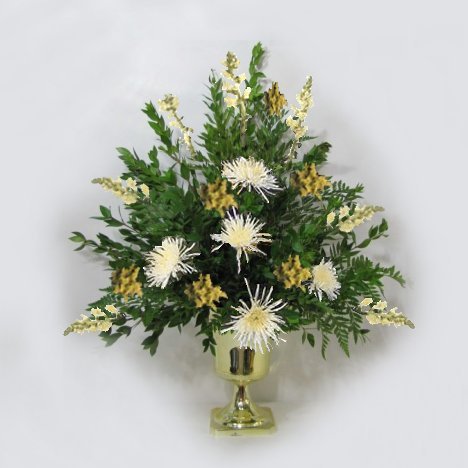Wedding Altar Decorations
Wedding altar decorations can be adapted to suit your own taste in flower colors and varieties. I'm going to show you how to look at a photo of a flower design online, then break it down by flower varieties, thus giving you a flower recipe.
Florist do this all the time. What they have to learn is basic design greening and flowering techniques. For instance - this is a typical fan spray that can sit on the altar or risers in a church setting. If a bride brought me a photo from the internet as shown below, I would first have to break it down into a flower recipe. This simply means I have to make a list of the products and fresh flowers needed to create a similar design. So I would start like this:
Products needed:
- Large Urn container
- Flower Food
- Florist Snips (Bunch Cutters)
- Floral Knife
- 1 Roll Waterproof Tape
- 2/3 bunch of Myrtle
- 1 bunch Leather Leaf Fern
- 1 -2 stems Ming Fern
- 2 -3 stems Italian Ruscus
- 5 White Spider Mums
- 7 Snapdragons
- 3 standard white Carnations
- 8 Standard Pink Carnations
- 4 stems Dark Blue Delphinium
- 6 stems Solidago
- Finishing Touch Flower Sealant

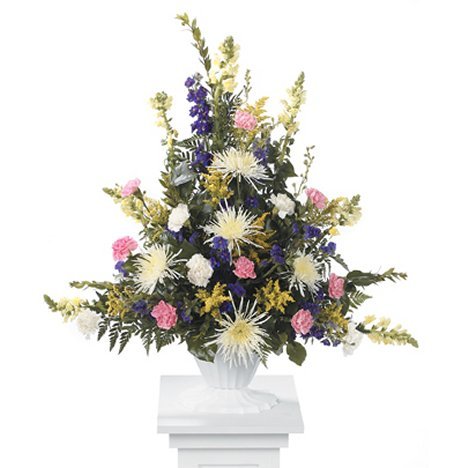
Now I have already demonstrated how to green in this type of container. Keep in mind that greenery is the backdrop of a flower piece. It's generally cheaper than flowers. If you buy mixed boxes of greenery, you can substitute for the ones shown below.
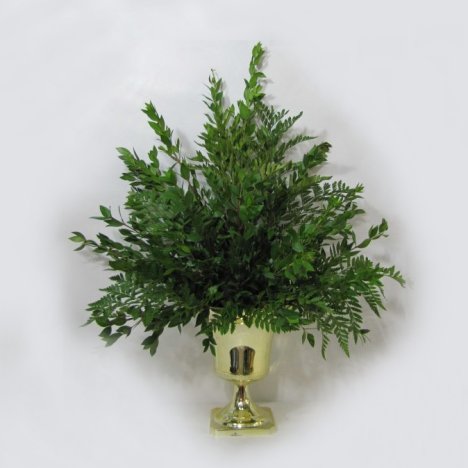
I start with the largest focal flowers. In this case, it is a large white spider mum. I generally recommend that you use cheaper flowers for decorating the sanctuary. Remember this is a large piece and has to have impact from a long distance. Save the expensive flowers for your bouquets and go with less expensive alternatives (such as chrysanthemums, daisies, roses, carnations, solidago, spray asters and other lovely flowers).
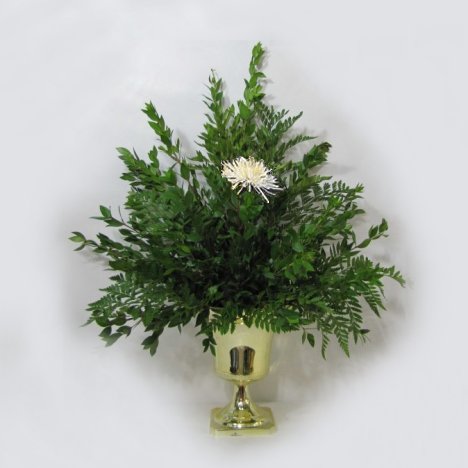
Pay attention to the angle of the flower heads, tilting them in different directions. Notice the top flower is pointing slightly up and the to the right, while the center flower is inserted deeper into the greenery and facing forward. This is what will give depth perception to your design and make it look beautiful from all angles.
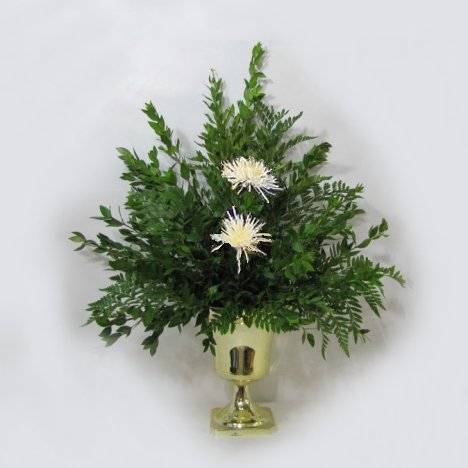
The next flower is facing towards the left. Notice the pattern that is developing with these main focal flowers.
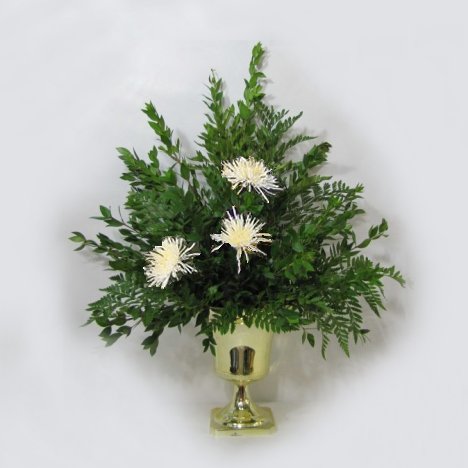
Now I insert another flower, except pointing to the right. I finish the focals by inserting the last white chrysanthemum tilting down towards the table top.
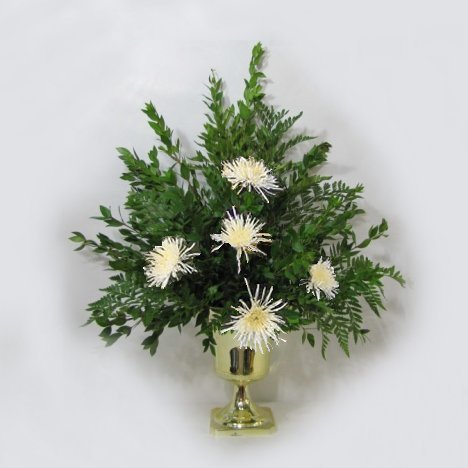
I insert next the first linear flower. For these types, use flowers that have long lines to frame and define the outer perimeter. This design is going to use snapdragons. You can also use roses, alstroemeria, carnations, liatris or other flowers.
I insert the first snapdragon at the top of the design.
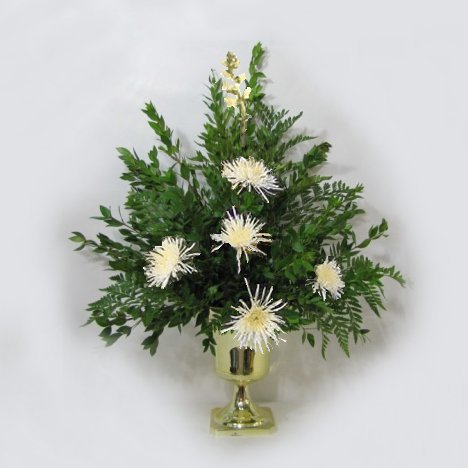
Now place a second one at the top, pointing towards the right.
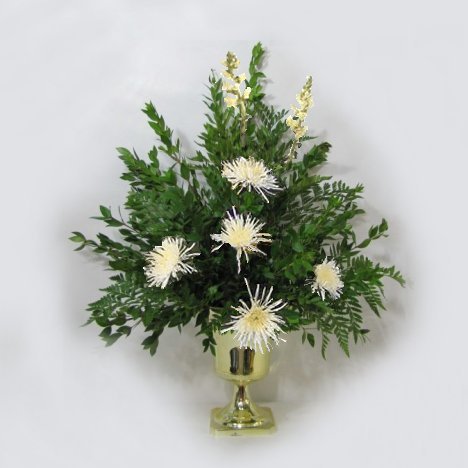
I put a similar one on the left. You can see how the the design is framing in the overall design.
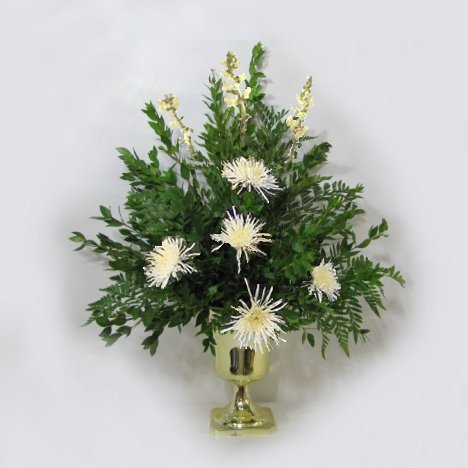
Now I place one on the lower right, pointing outward. Wedding altar decorations have to be big to have impact - so the snapdragons draw the eyes outward.
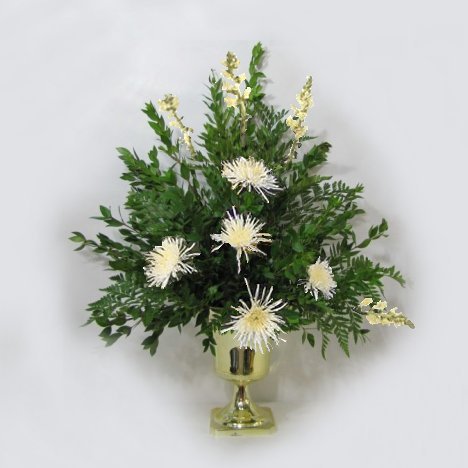
Place another snapdragon on the lower left, pointing down slightly.
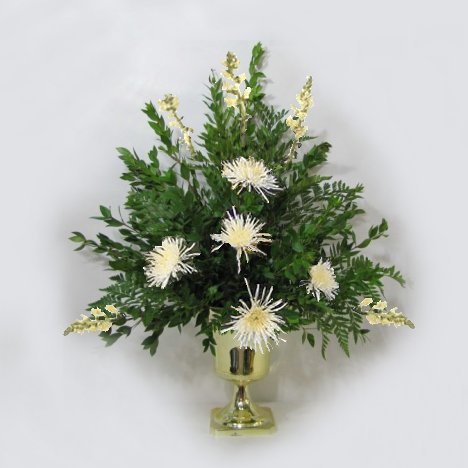
Look at the open spaces between the top and bottom. Divide in half and insert more snapdragons on the left and right.
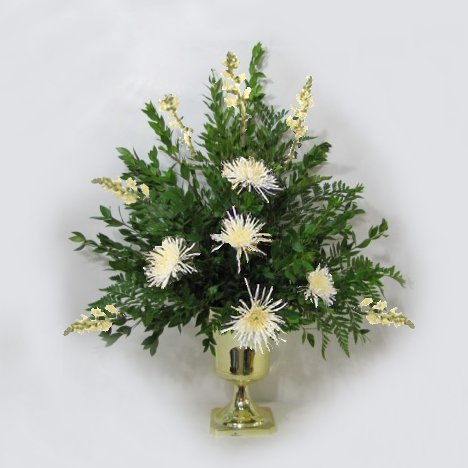
Once the linear flowers are all in place, you can begin adding in a filler flower. For this design we are using yellow solidego. Take your eyes into the open spaces between the focal flowers (spider mums).
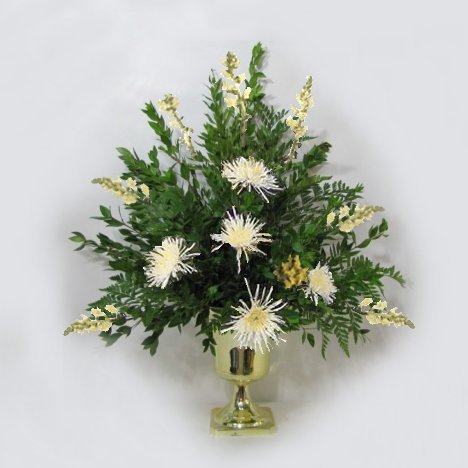
Just begin inserting into the open places. Sometimes solidago has long laterals that you can separate into separate pieces and insert deeply into the design to give more depth.
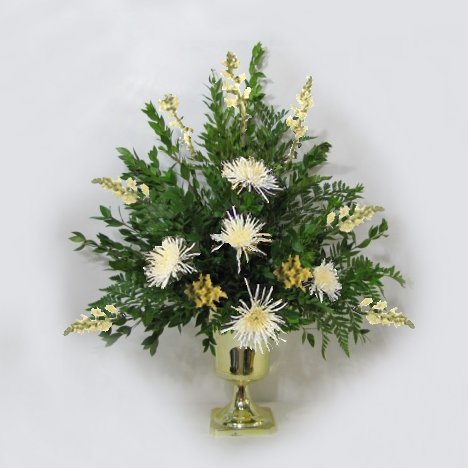
As you can see, the flowering process goes faster on wedding altar decorations that smaller pieces. I usually green up my design in advance. If I'm doing two pieces, I place them side by side so they will look like mirror images.
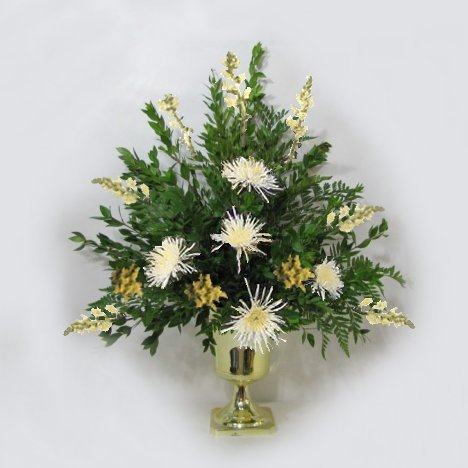
Keep moving forward, adding the solidago filler into the open, blank areas between the other flowers.
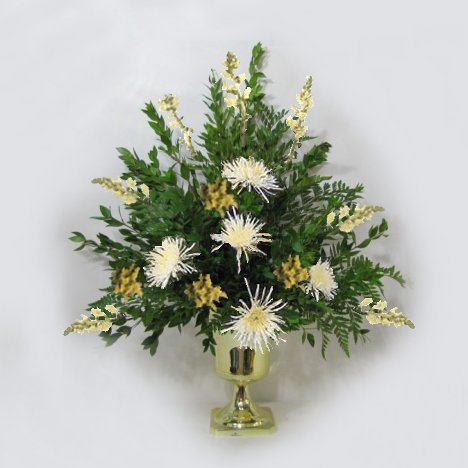
I'm happy with the mix of solidego filler in these wedding altar decorations (see the six placements below). I am ready to insert the secondary flowers. Carnations in white and pink will add a color contrast and a pop of color.
